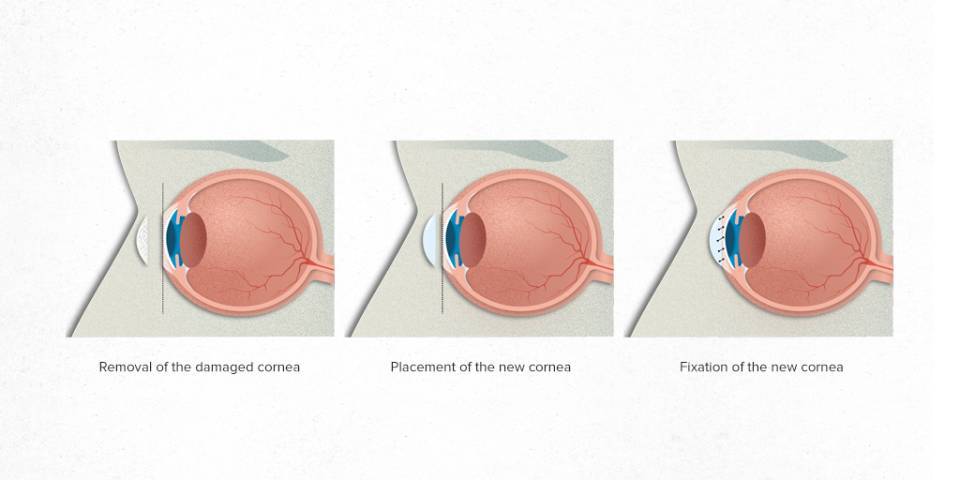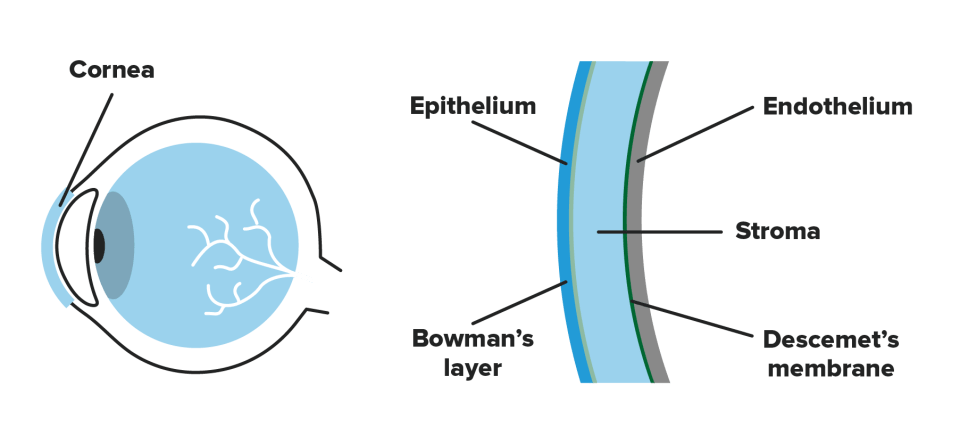- What is it?
- Pre-transplant phase
- Transplant rejection
- Transplant failure
Cornea transplant is a technique used to trat various diseases and injuries can affect the transparency and shape of the cornea, preventing light from passing through normally and causing impaired vision. Depending on which layer of the cornea is affected, cornea transplant can be: penetrating keratoplasty, deep anterior lamellar keratoplasty or endothelial keratoplasty.
Cornea Transplant explained in first person
A reassuring message for patients facing a cornea transplant, because cornea transplantation is very safe: rejection rates are low.
It is a feeling of relief because I knew that after the procedure the problem that I had been suffering from for so many years would be resolved.
A corneal transplant (or keratoplasty) is a surgical procedure that involves replacing damaged corneal tissue with healthy corneal tissue from a donor due to an irreversible visual impairment or corneal alteration that cannot be corrected otherwise. Corneal transplant surgery is one of the most common surgical procedures performed in the world.
What is the Cornea?
The cornea is a window of transparent tissue in front of the eyeball that allows light to enter and focus images on the retina and see them clearly.
Layers of the cornea:
- Epithelium. This is the outermost layer of the cornea. It keeps the cornea transparent and protects it against external agents.
- Bowman's membrane. This is a non-regenerating layer located between the epithelium and the stroma. When it becomes damaged it tends to scar.
- Stroma. This is the thickest layer of the cornea. It is responsible for strengthening the cornea and making it transparent and flexible.
- Descemet membrane. This is a thin layer produced by the endothelium. It has no cells and is made up of collagen fibres and proteins. This layer regenerates easily.
- Endothelium. This is the innermost layer of the cornea. It allows aqueous humour to pass through, which is necessary for its nutrition.
Various diseases and injuries can affect the transparency and shape of the cornea, preventing light from passing through normally and causing impaired vision. Depending on which layer of the cornea is affected, it may be treated:
- with penetrating keratoplasty,
- deep anterior lamellar keratoplasty (DALK),
- or endothelial keratoplasty.
The most common problems affecting the cornea include keratoconus (is a disease in which the cornea thins and becomes progressively more pointed. This generates pronounced irregular astigmatism), corneal ulcers or endothelial pathology.
Related contents
Substantiated information by:


Published: 27 November 2019
Updated: 27 November 2019
Subscribe
Receive the latest updates related to this content.
Thank you for subscribing!
If this is the first time you subscribe you will receive a confirmation email, check your inbox

